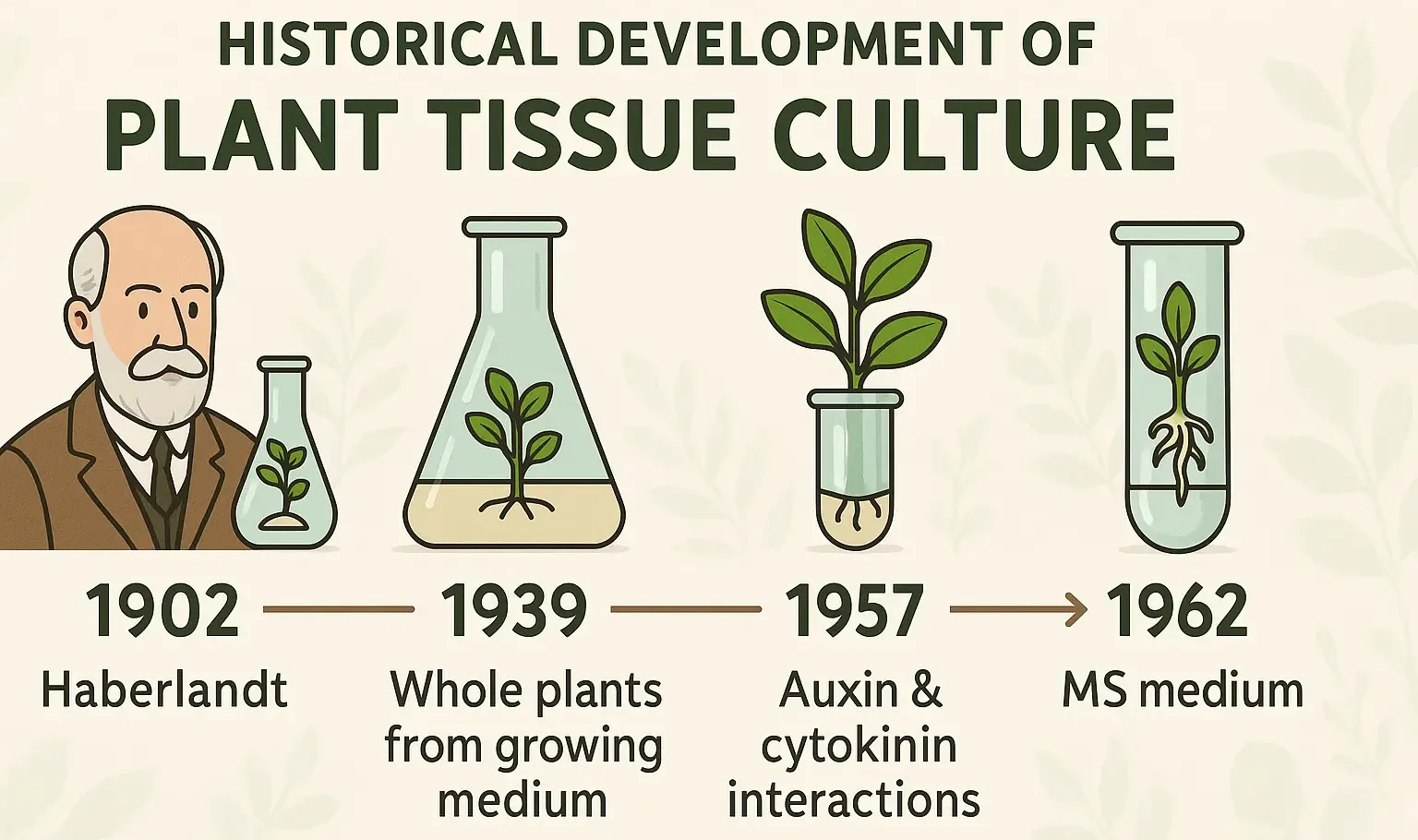- Historical Development of Plant Tissue Culture traces key milestones from discovery to modern applications in plant science.
- Historical Development of Plant Tissue Culture highlights advances enabling crop improvement and conservation.
- Plant tissue culture has evolved over more than a century, with key contributions from various scientists. Here’s a concise historical timeline:
| Period |
Key Developments |
Scientists Involved |
| 19th Century |
Cell Theory – Cells are the basic units of life. |
Schleiden & Schwann (1838-1839) |
|
Totipotency Concept – Plant cells can regenerate into whole plants. |
Gottlieb Haberlandt (1885) |
| Early 20th Century |
First Tissue Culture Attempts – Unsuccessful due to lack of growth regulators. |
Haberlandt (1902) |
|
Root Culture – Root tips successfully grown in sterile conditions. |
Kotte & Robbins (1922) |
|
Tomato Root Culture – Proved indefinite tissue growth under controlled conditions. |
Philip White (1934) |
| 1930s-1940s |
Discovery of Auxin (IAA) – Regulates cell elongation and differentiation. |
F.W. Went (1937) |
|
Callus Culture – Established using auxins. |
White & Nobécourt (1941) |
|
Coconut Milk in Tissue Culture – Found to enhance cell division and shoot regeneration. |
Overbeek (1947) |
| 1950s-1980s |
MS Medium – A widely used culture medium. |
Murashige & Skoog (1954) |
|
Role of Cytokinins – Essential for shoot regeneration. |
Skoog & Miller (1962) |
|
Somatic Hybridization – Protoplast fusion techniques for genetic modification. |
Various scientists (1970s) |
|
Commercial Applications – Used in agriculture, horticulture, forestry, and pharmaceuticals. |
1980s-Present |
Click Here to Watch the Best Pharma Videos

